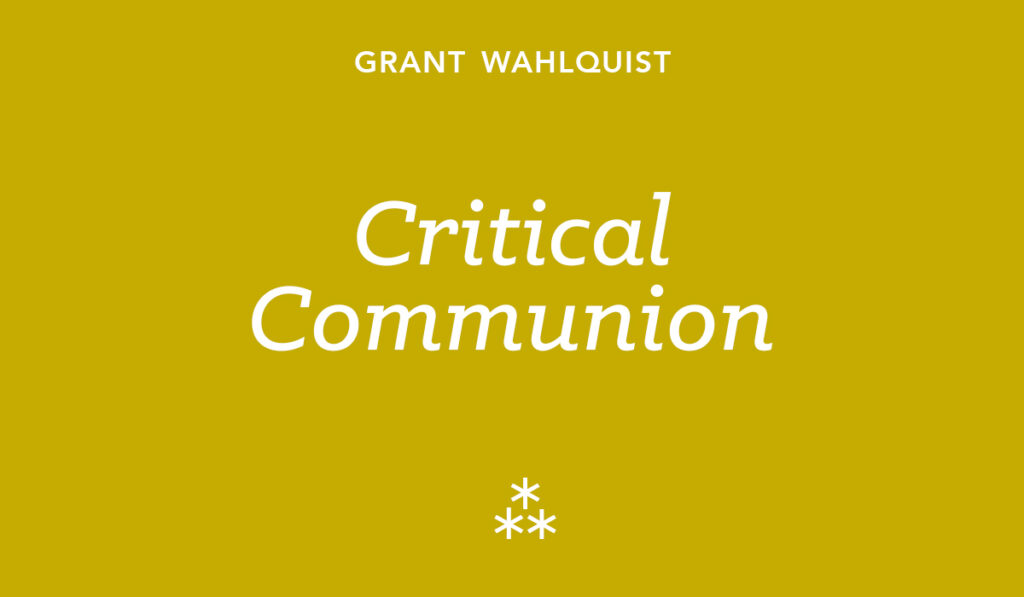by Grant Wahlquist
Every day since I closed my gallery’s doors on March 14th my email inbox has been deluged with announcements for “online exhibitions,” “digital viewing rooms,” “virtual art fairs,” Zoom events — in other words, with ads for websites sent by people whose response to an opportunity to slow down, reflect, and consider the importance of physical presence in art and life is to frantically double down on dematerialization. I am one of the “extremely online,” and at present the sales that sustain my program mostly occur out of state, yet I nonetheless instead chose to follow the example of restauranteur and writer Gabrielle Hamilton: “I’m going to let the restaurant sleep, like the beauty she is, shallow breathing, dormant … And see what she looks like when she wakes up — so well rested, young all over again, in a city that may no longer recognize her, want her, or need her.” While the art world playacts that things can continue just as before — and rest assured, the “pivot to digital” is a continuation of the drift away from deep looking and conversation that is the entire reason I opened a gallery — I find both respite and warning in Hamilton’s acknowledgement that certain cultural forms require bodily proximity. “If this kind of place” — a restaurant, a gallery, a museum, a concert hall — “is not relevant to society, then it — we — should become extinct.”
Relevance is a tricky thing. While some have argued that art needs to become “more relevant” in order to survive, more often than not this results in the subordination of aesthetic value to economic impact or “social engagement” — which is to say, to the tyranny of the quantifiable. In this regime, art workers sing for their suppers, fighting like crabs in a tank for whatever scraps plutocrats, politicians, and other gatekeepers offer, and not only amongst one another, but also with other types of precarity laborers. While this may come as a surprise from someone engaged in the difficult task of making a market for artists — assigning economic value to the countless hours of education, experimentation, and imagination that result in visual and conceptual pleasure — I believe art must nonetheless resist its instrumentalization and is in fact uniquely positioned to do so. Art is relevant because it is human, and so, while remaining differentiated as a cultural field, should be affirmed just as we affirm farming, fishing, cooking, teaching, and healing. Beyond re-opening the gallery doors in the next few weeks, I cannot say what the near or distant future holds. Yet I yearn to savor the lines of a drawing or a celadon brushstroke with another onlooker, to relish the funk of a bottle of wine in a dimly lit bar, to partake of all the forms of being human now in suspended animation. I do not know if others will recognize, want, or need these things. But I do.
This text was written May 21, 2020. Grant Wahlquist Gallery reopened June 3, 2020.


